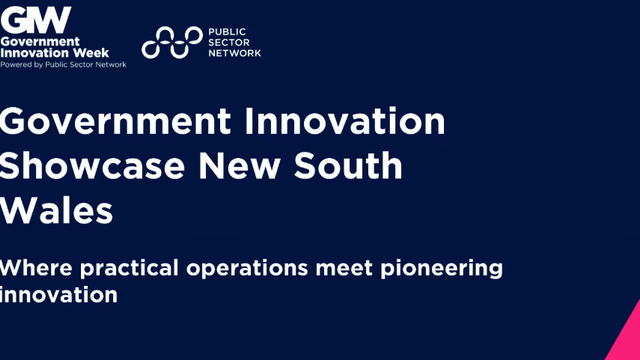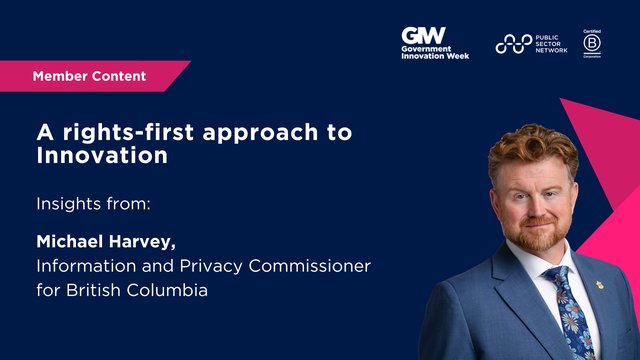Improving birth of a child life event interactions: Creating a more seamless, holistic experience

Eamonn Rooney
Project Manager, Birth of a Child Pilot
Services Australia
Registering a birth
The birth of a child for any parent is an undoubtedly overwhelmingly happy occasion. However, for any child born in Australia, the process to register the birth, enrol the child into healthcare and to access government services, is an unnecessarily burdensome and lengthy experience. As such, the Australian government together with stakeholder agencies, is developing the ‘Birth of a Child’ pilot, which aims to ease and shorten the process. The initiative is actually the first in a series to simplify all life event processes, and came out of a meeting of the Australian Data and Digital Council, a COAG sub-committee. [1] The ACT government was charged with leading the pilot program, though as Eamonn Rooney , the Project Manager of the program says, he is nominally employed under the office of the Chief Digital Officer of the ACT, but for this project sits under Services Australia, which oversees the project at a national level.
The initiative was developed because for every one of the more than 315,000 births in Australia each year, a parent can have “up to 7 interactions with government agencies to register the birth and enrol the child in Medicare and Centrelink.” Not only does this result in “unnecessary duplication,” but it creates opportunities for mistakes, and thus “approximately 30% of birth registrations have errors requiring follow-up” by either government agencies, parents, or both.
Part of the reason why there are so many interactions is because the current process requires parents to register with three separate agencies, even though they are all government agencies, though at least the process can be done “in any order.” Generally, parents receive a form from the Births, Deaths and Marriages office in their jurisdiction when they leave the hospital, which then needs to be completed. Separately, births needs to be registered with Medicare, and for any payments like parental or partner leave, or for the new-born supplement, registrations also need to be made through Centrelink. Some of these processes can be done online, whilst others need to be completed using paper-based forms and posted back to the agency. The reason why all three processes are separate is because historically, all three agencies have “quite different motivations. Medicare is about medical records, Centrelink is about money, and Births, Deaths and Marriages is a government requirement.” Not only is it all complicated and lengthy, but because of the multiple processes, “we actually don’t get a full number of registrations.” On top of that, though all the processes are free, to receive a birth certificate, “you’re asked to pay,” adding to the complexity and anxiety for parents.
[1] https://pmc.gov.au/sites/default/files/publications/addc-communique-6-september-2019.pdf
The pilot program
To change the current experience for parents, the pilot program is designed to “remove much of the burden.” It is clear from existing practices that governments agencies already have some information and are asking for other details multiple times, “as if they haven’t given it to government at all.” As such, the program is designed to “re-use information the government already has, and to establish an identity that we can all rely on.” It is also designed to be “national, scalable and customer-centric.”
To identify how to create a national program, Services Australia conducted market research in 2020 with a select group of new parents as well as staff in various government agencies across the country. The research revealed – what was already anecdotally known – that there needs to be “a centralised data exchange that will receive information from hospitals, and can then broker it out to local agencies.” The idea being that “information can be updated at the same time using a similar set of data, rather than seeking it separately each time.” Part of the centralisation will be about “using myGov as the customer interface.” In fact, since the Birth of a Child project is the first in a series, it is expected that eventually there will be “a life events type channel inside myGov,” which is also linked to MyHealthRecord. This will mean using one website or app rather than separately accessing Medicare or Centrelink.
So far the pilot program has begun in the ACT and in Queensland, and in each case, at one hospital where the majority of births take place. Initially, it was seen as a relatively simple program to develop that would just require “updating a few services and registrations.” But it has proven to be a very complex project because “a lot of collaboration is required,” and because each organisation has “their own legislative policy drivers and constraints.” Moreover, the project is dealing with federal and jurisdictional bodies. Even just for the pilot at two hospitals in two jurisdictions, it has required collaboration with Services Australia and of course Medicare and Centrelink, as well as the Digital Transformation Agency, the ACT and Queensland governments, the health departments and registrars in each location, along with the Births, Deaths and Marriages offices in each state and territory.
Services Australia has also up steering committees with representatives from states and federal agencies “across multiple channels, including customer experience; technology design; data; policy and legislation; project delivery; and change and communications.” These may change for the national rollout but have so far worked well. The current pilot stage is being referred to as the “alpha release, with beta and gamma still to come.” At the two hospitals that are part of the pilot, “all that the parents have to do is provide the consent and the child’s name before they leave the hospital, and Services Australia has been taking care of the rest.” Centrelink is not part of the process yet, but will be added shortly.
The nuance of the pilot is that parents still have to provide their information, but they only need to provide it once to Services Australia and then “the birth information can travel in parallel from Services Australia out to Medicare at this point, and then to Medicare and Centrelink shortly afterwards.” The beta release starting in November 2021 would see the information also flowing out to Births, Deaths and Marriages in relevant jurisdictions “in parallel with the current process,” and the gamma release in 2022 would “introduce the myGov customer interface to do all of those transactions in a seamless way.”
Moving forward
The gamma release is just for the Birth of a Child program, but that is in itself a pilot program for a larger, national “life events” program. Services Australia is already starting to develop “a Life Events Notifications System (LENS), made up of a digital gateway,” to enable better interaction with government, and “to broker information from various sources and distribute it out to required agencies.” This is for events like death notifications, name changes and other services. The current Birth of a Child program has shown that people and agencies use notifications and information regarding life events in different ways, and this will need to be taken into account as part of the next phase.
In the meantime, even getting to the alpha release was difficult, with lots of “complex policy and legal issues that required a lot of sign off from different agencies.” Some of that will be even more complicated for a national rollout of the LENS, particularly when it comes to privacy and national datasets. But “through goodwill we’ve been able to achieve a lot,” and this will hopefully continue.


































